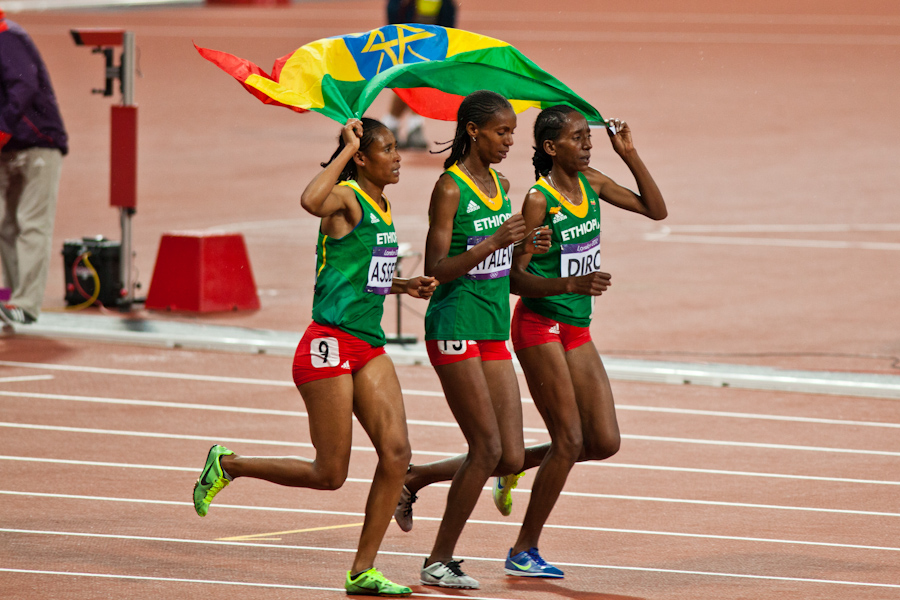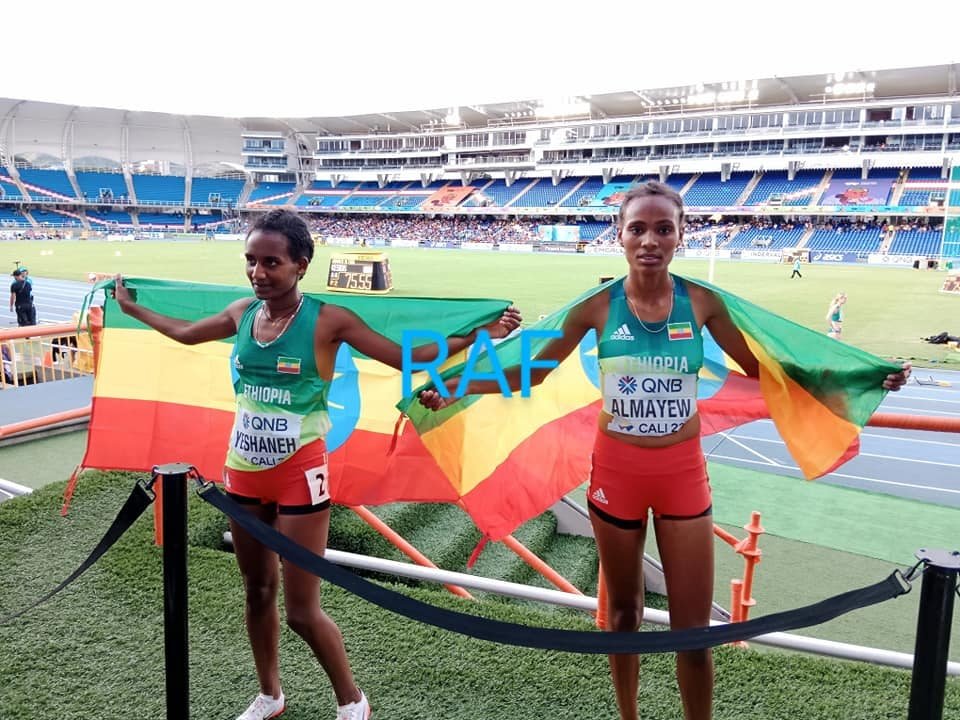History and Development of Ethiopian Steeplechase

The Ethiopian steeplechase, a captivating blend of endurance and technical prowess, boasts a rich history deeply intertwined with the country’s cultural heritage and geographic landscape. While the modern steeplechase, with its water jump and barriers, is a relatively recent introduction to Ethiopia, the roots of this discipline can be traced back to traditional practices that honed the skills of endurance and obstacle negotiation.
Origins in Traditional Practices
The mountainous terrain of Ethiopia, with its valleys, rivers, and rugged paths, has served as a natural training ground for generations of Ethiopians. Traditional practices, such as herding livestock across challenging landscapes and participating in communal hunts, required agility, strength, and the ability to navigate obstacles. These experiences laid the foundation for the physical and mental qualities essential for steeplechase running.
The Introduction of Modern Steeplechase
The formal introduction of the modern steeplechase to Ethiopia can be attributed to the influence of foreign coaches and athletes who brought the sport to the country in the latter half of the 20th century. Early Ethiopian steeplechasers were exposed to the discipline through training programs and international competitions, and their initial successes in regional and national events sparked a growing interest in the sport.
Key Milestones and Influential Athletes
Ethiopia’s rise to prominence in steeplechase is marked by a series of key milestones and the contributions of influential athletes.
- 1960s-1970s: The emergence of athletes like Abebe Bikila, a renowned marathon runner, and Mamo Wolde, a three-time Olympic medalist, established Ethiopia as a force in long-distance running, laying the groundwork for the country’s success in steeplechase.
- 1980s-1990s: The golden age of Ethiopian steeplechase began with the rise of Getaneh Tessema, who won a bronze medal at the 1988 Olympics. His success inspired a new generation of athletes, including Haile Gebrselassie, who later became a legend in distance running.
- 2000s-Present: Ethiopian steeplechasers have consistently dominated the international scene, with athletes like Kenenisa Bekele, Brimin Kipruto, and Conseslus Kipruto setting world records and winning multiple Olympic and world championship titles.
The Impact of Geographic Landscape and Cultural Influences
Ethiopia’s geographic landscape has played a crucial role in the development of its steeplechase prowess. The mountainous terrain, with its steep inclines and challenging trails, has honed the endurance and resilience of Ethiopian athletes. The country’s cultural emphasis on physical fitness and competitive spirit has also contributed to the success of steeplechase. Traditional practices, such as the Gena, a communal run, have fostered a spirit of camaraderie and a love for running that permeates Ethiopian society.
Notable Ethiopian Steeplechasers: Ethiopia Steeplechase

Ethiopia’s dominance in the steeplechase is undeniable, with a lineage of exceptional athletes who have consistently set new standards and redefined the sport. Their unique running styles, unwavering determination, and strategic approaches have made them formidable competitors on the global stage.
Prominent Ethiopian Steeplechasers and Their Achievements
The following table showcases some of the most prominent Ethiopian steeplechasers and their remarkable achievements:
| Athlete | Achievements | Records | Significant Contributions |
|---|---|---|---|
| Kenenisa Bekele | – 2x Olympic Champion (2008, 2012) – 3x World Champion (2003, 2005, 2009) – World Record Holder (7:53.63) |
– 3000m Steeplechase World Record (7:53.63) | – Elevated the steeplechase to new heights with his exceptional talent and dominance. |
| Getaneh Molla | – 2013 World Champion – 2012 Olympic Silver Medalist |
– Ethiopian National Record (7:58.79) | – Contributed significantly to Ethiopia’s consistent success in the steeplechase. |
| Abraham Kibiwot | – 2019 World Champion – 2018 African Champion |
– 2019 World Championship Gold Medal | – Represented a new generation of Ethiopian steeplechasers with his impressive performances. |
| Conseslus Kipruto | – 2016 Olympic Champion – 2017 World Champion |
– 2016 Olympic Gold Medal | – Demonstrated the resilience and determination of Ethiopian steeplechasers. |
| Ezekiel Kemboi | – 2x Olympic Champion (2004, 2012) – 4x World Champion (2003, 2009, 2011, 2015) |
– 3000m Steeplechase World Record (7:53.63) | – Pioneered a new era of Kenyan dominance in the steeplechase. |
Running Styles and Strategies of Ethiopian Steeplechasers
Ethiopian steeplechasers are known for their unique running styles and strategic approaches that have contributed to their success.
* Efficient stride length and cadence: They often employ a long, efficient stride length, enabling them to cover more ground with each step. Their cadence is also remarkable, allowing them to maintain a high turnover rate while minimizing energy expenditure.
* Water jump technique: Ethiopian steeplechasers have mastered the water jump, a critical element of the steeplechase. They utilize a smooth, flowing motion, minimizing the impact on their body and maintaining their momentum.
* Tactical awareness: They possess exceptional tactical awareness, often strategically positioning themselves in races and adjusting their pace to maximize their chances of victory.
* Strong finishing kick: Ethiopian steeplechasers are known for their powerful finishing kick, often surging past their opponents in the final laps to secure victory.
Comparative Analysis of Different Generations of Ethiopian Steeplechasers
Each generation of Ethiopian steeplechasers has brought its unique contributions to the sport.
* Early generations: Pioneers like Getaneh Tessema and Melese Yisma established Ethiopia’s presence in the steeplechase, showcasing their talent and determination on the global stage.
* Golden era: The era of Kenenisa Bekele and Getaneh Molla saw Ethiopia reach its peak in the steeplechase. Bekele’s world record and multiple Olympic and World Championship titles solidified Ethiopia’s dominance.
* Contemporary generation: Athletes like Abraham Kibiwot and Conseslus Kipruto continue to uphold Ethiopia’s legacy in the steeplechase, demonstrating their exceptional abilities and securing victories on the international stage.
Ethiopian Steeplechase in Global Competition

Ethiopian steeplechasers have consistently dominated the global stage, leaving an indelible mark on the history of the event. Their success is a testament to a confluence of factors, including rigorous training regimes, astute coaching strategies, and a deeply ingrained athletic culture.
Performance Analysis
Ethiopian steeplechasers have achieved remarkable success at major international competitions, consistently claiming podium finishes and setting world records. Their dominance is evident in their consistent performance at events like the Olympic Games, World Championships, and Diamond League meets.
- Ethiopian steeplechasers are renowned for their exceptional endurance, a result of their high-altitude training in the Ethiopian highlands. The thin air at high altitudes forces the body to produce more red blood cells, improving oxygen-carrying capacity and enhancing endurance. This adaptation provides them with a significant advantage in long-distance races.
- Ethiopian steeplechasers possess a unique combination of speed and stamina, enabling them to maintain a strong pace throughout the race while navigating the water jumps and hurdles. This tactical prowess allows them to outmaneuver their competitors, particularly in the final stages of the race.
- Ethiopian steeplechasers often face challenges in technical aspects of the race, particularly in water jump technique. While their endurance and speed are undeniable, some athletes struggle with maintaining their rhythm and momentum over the water obstacles, leading to time penalties and potentially affecting their overall performance.
Factors Contributing to Success, Ethiopia steeplechase
The success of Ethiopian steeplechasers can be attributed to several key factors, including:
- Rigorous Training Regimes: Ethiopian athletes undergo rigorous training programs that emphasize endurance, speed, and technical proficiency. These programs often involve high-intensity interval training, hill workouts, and extensive cross-training, preparing them for the demands of the steeplechase.
- Astute Coaching Strategies: Ethiopian coaches are renowned for their deep understanding of the sport and their ability to develop athletes’ strengths while addressing their weaknesses. They employ innovative training methods and tactical strategies, ensuring their athletes are well-prepared for competition.
- Strong Athletic Culture: Ethiopia has a rich athletic tradition, with a strong emphasis on running and endurance sports. This culture provides a fertile ground for nurturing talent, fostering a competitive spirit, and encouraging athletes to strive for excellence.
Future Prospects
The future of Ethiopian steeplechase remains bright, with a new generation of talented athletes emerging. The continued emphasis on training, coaching, and athletic culture ensures the ongoing success of Ethiopian steeplechasers on the global stage.
- The emergence of new talent in Ethiopia is a positive indicator of the future of the sport. Young athletes are being trained in modern facilities, benefiting from advanced coaching methods and access to cutting-edge technology. This ensures the continued development of highly competitive steeplechasers.
- The ongoing evolution of the sport, with improvements in training techniques and technological advancements, will further enhance the performance of Ethiopian steeplechasers. As athletes continue to push the boundaries of human performance, we can expect to see even more impressive feats from Ethiopian steeplechasers in the years to come.
Ethiopia steeplechase – Ethiopia’s dominance in the steeplechase is a testament to their dedication and natural talent. Their runners navigate the water obstacles with an almost otherworldly grace, their strides a blur as they chase the finish line. The final Olympic steeplechase race, a spectacle of grit and strategy , often features a fierce battle between Ethiopian athletes, leaving the world in awe of their unwavering spirit.
The echoes of their victories reverberate through the years, inspiring a new generation of Ethiopian steeplechasers to rise and conquer the track.
The rhythmic pounding of hooves on the dusty track, the air thick with anticipation, the vibrant colors of the Ethiopian flag fluttering in the breeze – these are the hallmarks of the legendary Ethiopian steeplechase. The sport’s legacy is as rich as the country’s history, and it’s a testament to the spirit of resilience and strength that resonates with the work of artist kenneth rooks , whose sculptures capture the raw power and beauty of the human form.
Just as the steeplechase demands unwavering focus and athleticism, so too does art require a dedication to craft and a deep understanding of the human experience. The Ethiopian steeplechase, with its captivating rhythm and spirit of competition, is a perfect metaphor for the creative journey that Kenneth Rooks so eloquently embodies.